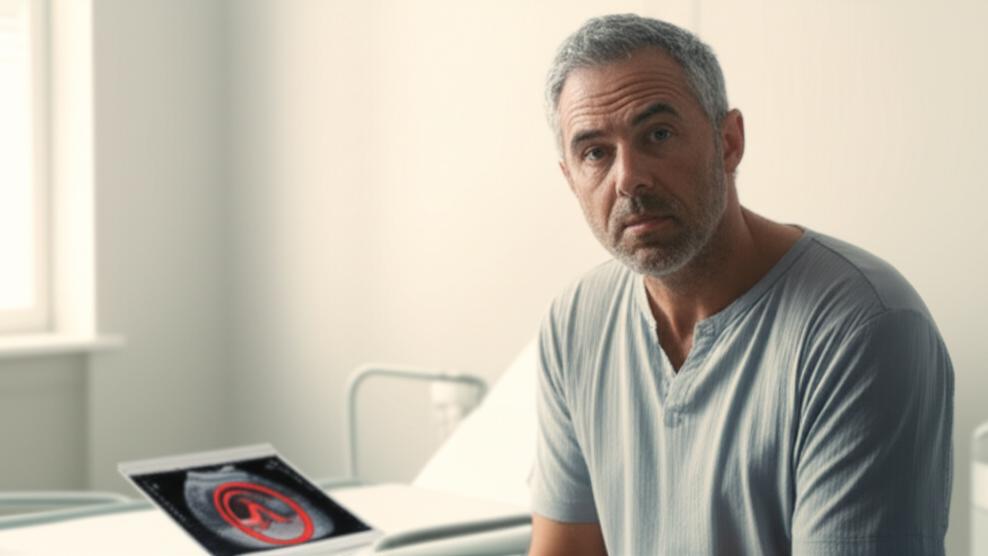Imagine this: you’re in for a routine check-up, maybe getting a chest X-ray for a persistent cough, and then we spot something unexpected. A little surprise on the image of your aorta, the main highway for blood leaving your heart. Sometimes, that’s how we first stumble upon an Ascending Aortic Aneurysm. It’s often a silent guest, which is why understanding it is so important.
What Exactly Is an Ascending Aortic Aneurysm?
So, what are we talking about here? An Ascending Aortic Aneurysm, sometimes called an ATAA (ascending thoracic aortic aneurysm because it’s in your chest), is essentially a bulge or a weak spot in the wall of the first part of your aorta. Think of it like a weak spot on an inner tube that starts to bulge out. The aorta is the largest artery in your body, carrying oxygen-rich blood from your heart to everywhere else. If that bulge, the aneurysm, gets too big, there’s a risk it could tear or even rupture (break open). That’s serious, as it can lead to life-threatening internal bleeding.
It’s not incredibly common, but it’s not rare either. These aneurysms affect about 10 out of every 100,000 people each year, and they make up a big chunk – around 60% – of all aneurysms found in the chest part of the aorta.
Who’s More Likely to Face This? And Why Does It Happen?
You might be wondering what makes someone more prone to developing an Ascending Aortic Aneurysm. Well, a few things can increase the chances:
- Age and Gender: Men over 60 and women over 70 seem to be at higher risk.
- Family History: If close relatives have had aortic aneurysms, your risk might be higher. It’s something we’d want to know.
- Specific Heart Conditions: Having a bicuspid aortic valve (where the heart valve has two flaps instead of the usual three) is a known risk factor.
- Connective Tissue Disorders: Conditions like Marfan syndrome or Loeys-Dietz syndrome, which affect the body’s “scaffolding” tissues, can weaken blood vessel walls.
- Other Health Issues: Things like long-standing high blood pressure, heart disease, and even smoking can play a part.
The “why” often comes down to the aorta’s wall becoming weak or damaged. As we age, or due to conditions like atherosclerosis (that’s plaque buildup in arteries), the aorta can lose some of its stretchiness. The constant force of blood pumping through can then cause that weakened area to bulge. Other culprits can include:
- Aortitis: Inflammation of the aorta.
- Traumatic injuries: A direct injury to the chest could, in some cases, damage the aorta.
- Turner syndrome: A genetic condition that can sometimes involve heart issues.
Listening to Your Body: Signs of an Ascending Aortic Aneurysm
Here’s the tricky part: most of the time, an Ascending Aortic Aneurysm doesn’t shout for attention. Many people have no symptoms at all. It’s a bit of a silent lurker.
However, if symptoms do appear, they might include:
- A dull ache or pain in your chest or high up in your back.
- A persistent cough or some wheezing.
- Difficulty swallowing (dysphagia).
- A hoarse voice.
- Feeling short of breath.
If you experience any of these, especially if they’re new or worrying, it’s always best to chat with your doctor. And if you ever have sudden, severe chest or upper back pain, trouble breathing, cough up blood, or experience dizziness or stroke-like symptoms – that’s an emergency. Call for help right away.
How We Find an Ascending Aortic Aneurysm: The Diagnostic Journey
Because they’re often silent, we frequently find these aneurysms by chance, perhaps during tests for something else entirely. If we suspect an Ascending Aortic Aneurysm, or if one is found, we’ll want to get a clearer picture. Here’s how we might do that:
- Chest X-ray: This is a quick first look. It can sometimes show if the aorta looks enlarged, but it’s not detailed enough for smaller aneurysms.
- Transthoracic Echocardiogram (TTE): This uses sound waves – like an ultrasound – to create moving pictures of your heart and how blood is flowing. It’s great for checking heart valves too.
- Chest CT scan: This is often a key test. A CT scan uses X-rays to create detailed 3D images of your chest. It can show us the size and shape of the aorta very clearly, especially if we use a special contrast dye given through an IV. This helps us spot even small aneurysms.
- MR Angiography (MRA): This is an MRI specifically looking at blood vessels. It can give us excellent images of the aorta and also check how well your heart’s main pumping chamber (the left ventricle) and the aortic valve are working.
Our Game Plan: Managing an Ascending Aortic Aneurysm
Okay, so what if we find one? Your treatment path for an Ascending Aortic Aneurysm really depends on a few things: its size, how fast it might be growing, and what might have caused it.
If the aneurysm is on the smaller side (usually less than 5.5 centimeters, or about 2 inches) and you don’t have other major risk factors like Marfan syndrome or a strong family history, we often don’t need to jump to surgery right away. Instead, our approach might be:
- Medications: We’ll likely prescribe medicines to help manage your blood pressure. The goal is to reduce the stress on the aorta’s wall.
- Watchful Waiting (Monitoring): This is crucial. We’ll use imaging tests (like a CT scan or echocardiogram) regularly, perhaps every six months at first, to keep a close eye on the aneurysm’s size. If it’s stable, we can space these checks out.
- Lifestyle Adjustments: This is where you play a huge role!
Now, if the aneurysm is larger (typically 5.5 centimeters or more), or if you have conditions like Marfan syndrome, a bicuspid aortic valve, or a family history of aortic dissection (a tear in the aorta), we might recommend surgery sooner. Studies suggest these factors can make an aneurysm more likely to cause problems even at a smaller size. We’ll always discuss the pros and cons based on your specific situation.
What About Surgery?
If surgery is needed, the main goal is to repair the weakened section of the aorta. Typically, this involves an open-heart procedure. A surgeon will make an incision in your chest to reach the aorta. They’ll then carefully remove the bulging part (the aneurysm) and replace it with a graft – this is a sturdy tube made of a special synthetic material.
Sometimes, especially depending on where the aneurysm is, the surgeon might need to detach and then reattach the coronary arteries (the small vessels that supply blood to the heart muscle itself) to the new graft. This kind of open surgery usually requires a cardiopulmonary bypass machine. It sounds a bit sci-fi, but it’s a machine that temporarily takes over the job of your heart and lungs during the operation.
If you also have issues with your aortic valve, like a bicuspid valve, the surgeon might repair or replace the valve at the same time. They can use a graft that has an artificial valve already attached, or sometimes repair your existing valve.
Surgery is a big step, and it’s done under general anesthesia, meaning you’ll be asleep.
What to Keep in Mind (Take-Home Message)
Living with an Ascending Aortic Aneurysm diagnosis can feel a bit daunting, I know. But here’s what I really want you to remember:
- Often Silent: Many people with an Ascending Aortic Aneurysm have no symptoms. Regular check-ups can be key.
- Know Your Risks: Family history, certain genetic conditions (like Marfan’s), and lifestyle factors play a role.
- Monitoring is Key: If an aneurysm is found, regular imaging helps us track its size and decide on the best course of action.
- Treatment Varies: Smaller, stable aneurysms might be managed with medication and lifestyle changes. Larger or rapidly growing ones often need surgery.
- Surgery Can Be Very Effective: For elective (planned) surgeries, the outlook is generally good. Studies show around 79% of people live at least 10 years after treatment.
- Emergency Signs are Critical: Sudden, severe chest/back pain, trouble breathing, or coughing up blood need immediate medical attention. The outlook is much more serious if an aneurysm tears or ruptures.
- You’re in Control of Lifestyle: Healthy diet, no smoking, managing blood pressure – these things really matter.
- Ask Questions! If you’re diagnosed, don’t hesitate to ask:
- How big is my aneurysm?
- How quickly is it growing (if it is)?
- What are my personal risks of it rupturing?
- What are my treatment options, and what are the risks and benefits of each?
- Will I need surgery?
A Final Thought
Hearing words like “aneurysm” can be scary, there’s no doubt. But knowledge is power. By understanding what an Ascending Aortic Aneurysm is, working closely with your medical team, and making those important lifestyle choices, you’re taking the best possible steps to protect that vital highway – your aorta. You’re not alone in this, and we’re here to help you navigate it.


